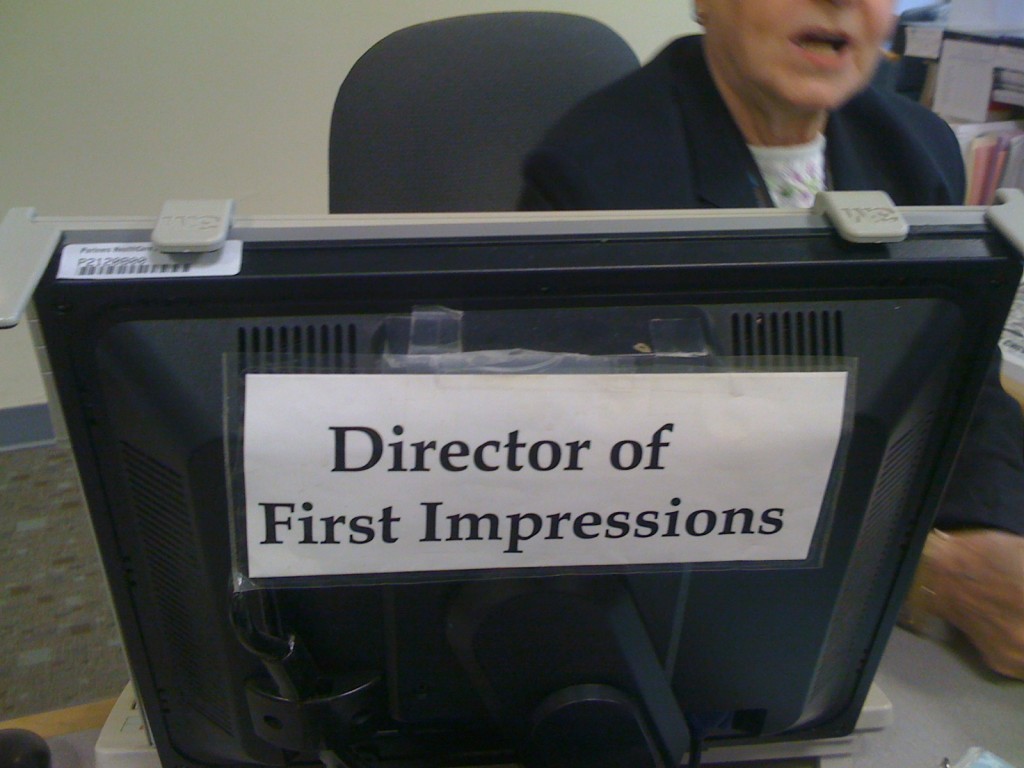“You only get one chance to make a first impression” . . . blah, blah, blah, blah. I promise that is not what this is about today because you know this cliche.
You know it’s true. I know it’s true.Your grandfather told it to you, then your mother, then your teacher, then your boss, and surely some helpful friend when you were trying to decide if you should wear an old t-shirt or a button down shirt on a date. Of course we don’t always make a good first impression every time but we do know we only have one chance to make the first impression.
Here is what else we all probably know: When we don’t make a good first impression we either don’t get another shot or we spend many subsequent interactions trying to recover from that bad impression. Sometimes it works and sometimes it doesn’t work. Sometimes it seems like it works and then you find out later the other party never let go of the bad first impression. It would be ideal to always make a good first impression – whether it is 3 seconds, 5 minutes, a weekend, or a month long, your first interaction with someone should be good in their eyes.
(Note: ‘good in their eyes’ means that in order to give a good first impression you need know how the other party defines ‘good’)
A good first impression isn’t only about the impression we leave though, it has legs. Over the years of working with customer experience and customer loyalty Ceatro Group has learned something else very interesting about good first impressions: they reduce how quickly people get angry at you or dismiss you if you do things that upset them. And we have learned the converse about bad first impressions: they increase how quickly people get angry at you or dismiss you if you upset them.
What does this mean?
- By giving a great first impression you essentially buy a little personal equity with the other party and for it they give you more leeway the first time you upset them.
- By giving a bad first impression you put the other party on notice that you don’t care that much about their needs, you put them in a defensive position, and the next time you upset them they have a stronger reaction from a defensive position.
>> We first recognized this phenomenon while working with a mobile telecom company that offered only pre-paid phones (the type you buy in a department store or a drug store along with a card for minutes) to consumers. They were losing customers at a higher rate than was expected and at a higher rate than they desired. We could see from data and from customer interviews that the customers that had to call or email the company during the initial phone set up step to get the phone set up, instead of succeeding online or with the phone itself, were leaving at a higher rate.
We were aware that the general service being offered in the call center and through email wasn’t fantastic but it shouldn’t have been causing high levels of attrition (it wasn’t that bad!) We decided to test the first few phases of the customers’ experience (the one they were really having, not the one the company thought they were having) to see what was happening. And, indeed, it was terrible. It was pull-your-hair-out illogical and, even if you mastered its logic, 6 out of 10 times you still didn’t succeed at getting your phone turned on. If you didn’t succeed you then had to find a different phone or web device to call the less-than-stellar customer service team or to email them.
The first and most important step of starting the relationship with this phone company was making people really frustrated. They needed the phone so they didn’t leave as customers right away. We estimated these already-angered customers engaged the company one or two more times out of necessity, each time ready to be made angry. The employees of the company took a lot of flack on calls and in emails even when things were going well. This caused employee unhappiness as well. And then as soon as the customers ran out of phone minutes they found a new provider.
>>Then we saw it again while working with a consumer electronics manufacturer that manufactured electronics for other companies (otherwise known as an original equipments manufacturer or an OEM). This OEM needed help understanding why its customers (companies that sell branded electronics) had recently become unusually difficult to work with in the development process and were rejecting a number of pre-ordered products after they were made. Normally since an OEM generally designs to the customers’ specs and talks to the customer throughout the process the customer acceptance step is pretty easy. But something had changed.
Though the OEM’s sales team made fine first impressions in the sales process, as soon as the customers were passed to the account management team to do the critical step of defining the requirements everything went haywire. That step is the first step in the real relationship and the one that has the most impact on the product that comes out the other end. This step also builds the trust that allows the customer to let go of the process and not micromanage the OEM’s development process (why hire someone to do it for you if you have to micromanage them, right?)
Due to new account teams, new processes, and new metrics all customers brought on in a specific five month period had terrible first impressions as the relationship kicked off that left them distrustful and guarded through the development process. A number of those customers were so disengaged they just stopped participating in the process and the product that came out the other end wasn’t really what they wanted and the products weren’t accepted.
In both of these cases improving the first impression at the kick off the relationship – 20 minutes and 3 weeks in duration respectively – improved the employee experience, customer attrition, and revenue. First impressions are important to get the business (and friends, jobs, dates, etc.) but also important in securing customers’ trust and support through out the relationship. Doesn’t that make it more compelling to get right? We think so.
One of our favorite examples of grassroots titling:
This sign is only up when this specific receptionist is running the front desk at a regional hospital.

